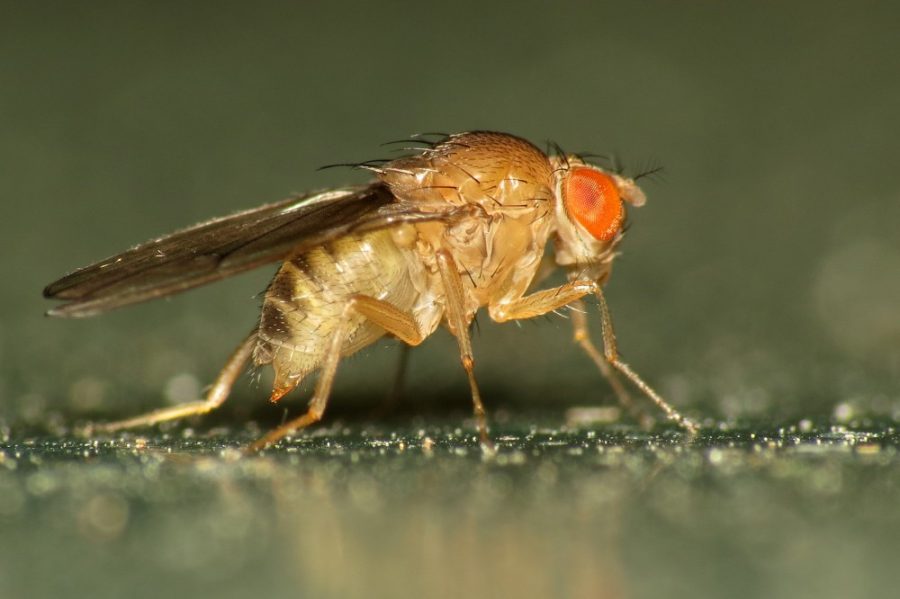At the Arizona Insect Festival on Oct. 1, there were many booths around the Slot Canyon Cafe and the rest of the Environment and Natural Resources 2 courtyard, each crowded with children and adults exploring entomology. One of the booths was the fruit fly booth.
The booth offered information on how fruit flies are used by University of Arizona’s BIO5 labs for genome study. Fruit flies can be used for genome study to potentially learn to edit diseases out of human DNA, according to Luciano Matzkin, associate professor of entomology.
Matzkin runs the lab studying fruit fly genome replacement, a lab which has published 33 research papers on topics such as the study of genome editing and ecology diversity in fruit fly species.
Carson Allan, manager of Matzkin’s lab, was at the booth at the Arizona Insect Festival.
“Studying desert fruit flies is important because they are local, and we have found out a lot about their impact of cacti ecology,” Allan said. “Also, if we lose a couple fruit flies, it isn’t the same damage as experimenting on mice or people.”
RELATED: Past, present and future: A new era at Tumamoc Hill
Using the protein Cas9 that is grown in lab from bacteria, researchers can alter strands of DNA, Allan said. The researchers then make a cut in the DNA genome sequence.
Genome sequencing is the order of bases — the As, Cs, Gs and Ts from high school biology classes — that make up an organism’s DNA.
After the DNA strand is cut, a “frame shift” can occur, which causes mutation by deleting or erasing part of the genome, according to Allan. By changing the genome, the body can be altered by the new DNA sequence.
With fruit flies, the booth’s example of mutation was the eye color of fruit flies. Naturally, desert fruit flies have red eyes, but through genome editing, white-eyed fruit flies were grown instead.
“This is just small editing,” Allan said. “Mice are being tested in more advanced capabilities of genome editing in other labs.”
Posters at the booth explained the process of homology-directed repair, which is how the DNA strand is cut in two places and extracted as a whole.
“The desert fruit fly eggs are injected with Cas9 enzyme that finds a strand to match, break and then replace the genome,” said Fernando Díaz, post-doctorate student in Matzkin’s lab.
RELATED: Water purification truck works to show safety of purified waste water
That inserted Cas9 protein plasma, which is used to repair the genome, is only put into the sequence by chance. There is no perfect solution to adding in the alteration yet, but with or without the protein in the genome sequence, the DNA repairs itself after the extraction, according to Allan.
The desert fly specimens at the booth were from Santa Catalina Island, Baja California, Sonoran and Mojave desert. Unlike other fruit flies, the desert fruit flies are attracted to cacti. They live in their egg to pupa development stages for around 10 days on average, then they break out of the egg for the adult stage, living an average of 30 days total, according to Díaz.
Matzkin’s research lab is also studying how geographical differences in desert regions cause fruit fly specimens to change their ecologies. These ecological differences facilitate many of the life histories, behaviors and physiological and genetic differences between the cactus host populations, according to the abstract of a 2014 research paper published by Matzkin.
The preferred host cacti for desert fruit fly have different nutrients that change the evolution of the fly as well as the cacti. The Arizona species have evolved 500 million years from the common ancestor, while the Navajo species is 4 million years from the common ancestor the two share, according to Allan.
Follow The Daily Wildcat on Twitter









